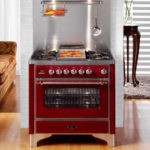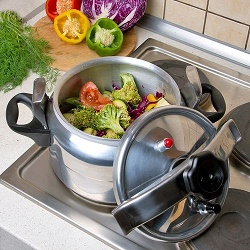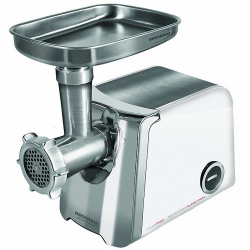Kinds of electric stoves for home
Choosing an electric stove, the user is faced with an abundance of varieties of this technique. Types of electric stoves include several categories. Appliances are divided by type of heating element, surface material and method of installation. Despite the fact that there is no strict and precise classification, it is possible to systematize and streamline the entire diversity of the modern market of kitchen stoves.
Content
Classification by installation type
Structurally, electric stoves are divided into three main categories.
- Portable (desktop, portable). These are small tiles with one or two heating zones.Such equipment is often acquired as a temporary or summer cottage.
- Embedded The hob is designed to be integrated with kitchen units.
- Detached classic stove complete with oven. They have impressive weight and relatively large size.
The size of the models for embedding depends on the number of burners, which can be from three to seven. Classic cookers are divided into full-size and narrow, of course, the smaller the width of the device, the smaller the heating zones on the hob.
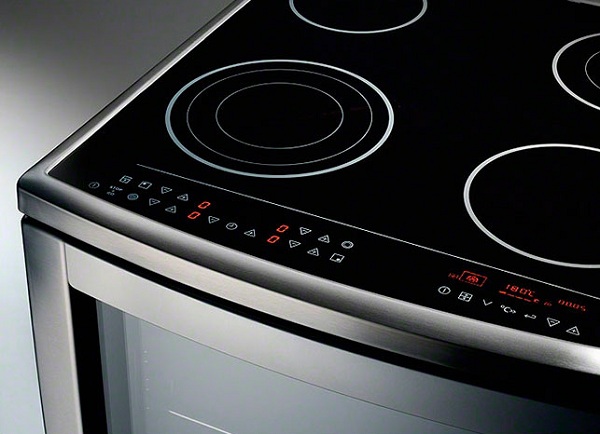
Freestanding electric cooker
What is the difference of coatings
The main working area of any stove is the hob where the burners are located. There are several types of coatings:
- enamel;
- stainless steel;
- strained glass;
- glass ceramics.
Enamel
The advantage of enamel in a wide range of colors, and proper care such material is able to serve for many years. As a rule, the enamel cover the classic free-standing stoves or portable electric stoves.
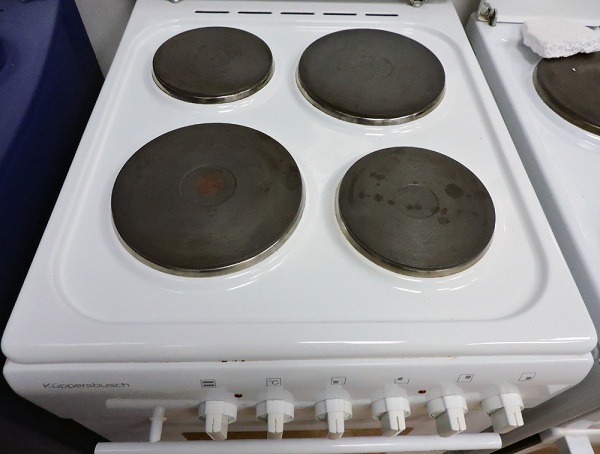
Enamelled electric stove
Stainless steel
Stainless steel is a practical and aesthetic option, it can be brushed, polished.Unlike enamel, steel is more resistant to abrasive powders and metal sponges, but their systematic use can lead to loss of gloss. Stainless steel withstands significant mechanical shocks and in general is pretty resistant coating. Its only drawback is that steel is quickly polluted, all drops of water or traces of food are visible on it.
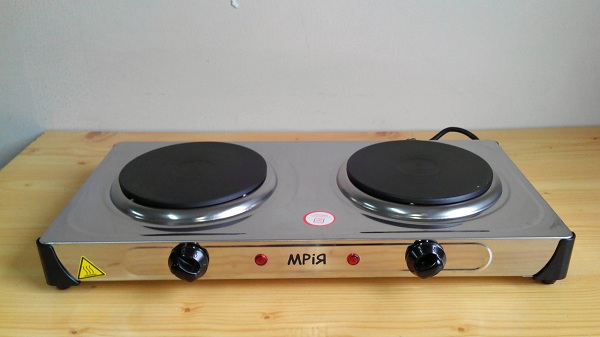
Stainless steel electric cooker
Tempered glass and glass ceramics
Tempered glass, like glass ceramics, attracts with its durability and presentable appearance. Smooth shiny surfaces will exquisitely complement any design, but require a special approach to the use. First of all, they need to be protected from punctures, any abrasives and metal sponges. Aluminum utensils for cooking traces are left, because it should also be abandoned, making a choice in favor of stainless steel, heat-resistant glass, cast iron or ceramics.
Comparing tempered glass and glass ceramics, the first loses a little. One of the useful properties of glass ceramics is vertical heat transfer. In simple terms, under the outline of the burner is a heating element, which transfers heat vertically.Thus, during the cooking process, the burner is heated predominantly and not the entire surface of the stove.
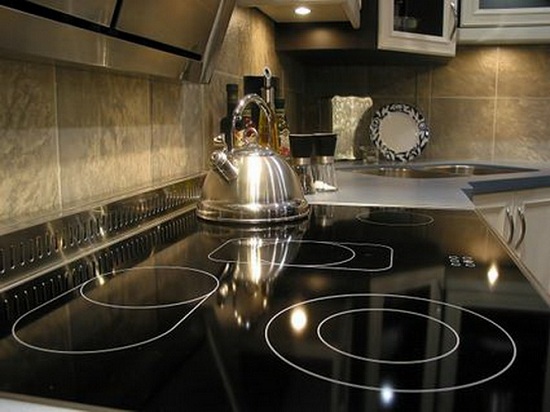
Built-in ceramic hob
Types of heating elements
Classification of stoves by type of heaters is one of the key, most often sellers just so divide the cooking surfaces. In addition, the type of heater determines the power consumption of the device, the speed of cooking, the types of suitable dishes.
Cast iron
Pancake-plates are familiar, so they equip electric stoves for several years, along with spiral heating elements. The peculiarity of their installation is that they always rise above the surface of the plate, which creates inconveniences such as accidental tilting of dishes and difficulties in cleaning. Besides that such elements are short-lived, the cast iron is also quite fragile, it is easy to split it with point mechanical blows. The advantages are unpretentiousness to the used dishes, the user can install pots and pans from any material or with defects at the bottom.
Different types of electric stoves with cast iron or spiral heating elements belong to the lower price category, but power consumption of such household appliances can not be called economical.
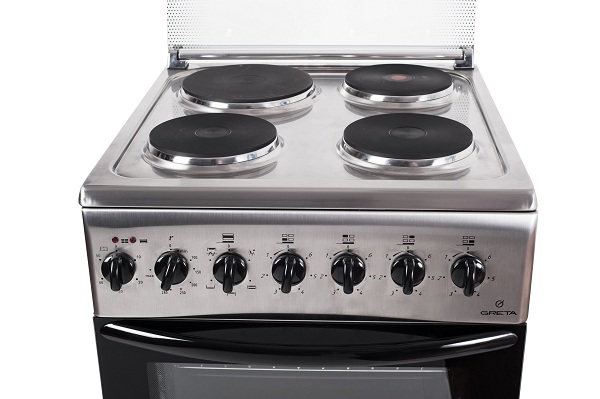
Hi-light
Such burners are a ribbon ten-heater made of a special alloy with a good thermal conductivity. These plates quickly and efficiently heat the bottom of the dish, but consume too much electricity. Despite the advanced technology, these types of stoves are not widely spread; they are “crowded out” by induction hobs.
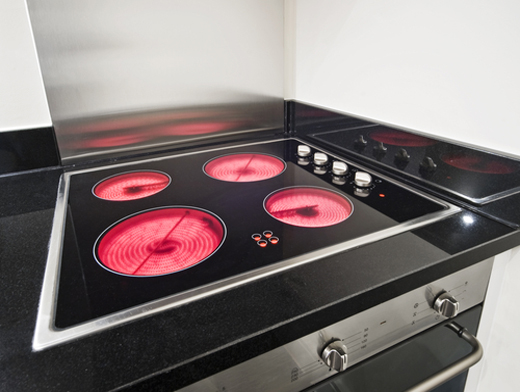
Halogen
These heaters can easily compete with the induction heating time of the burner. Energy consumption can be called "average". If we analyze the reviews of the owners of such electric stoves, we can note the high quality of manufacturing and the minimum number of complaints.
Induction
Induction heating heaters are distinguished from all the above described by the principle of operation. If the heating elements transfer heat to the burner, then the magnetic coils inducing magnetic wavesIt is the bottom of the dish that is heated. Due to this, two key advantages can be distinguished: the surface of the stove and the burner remains relatively cold, energy is consumed economically.
The disadvantages of such plates are also weighty, for such a hob is suitable exclusively magnetic dishes (and the bottom should be magnetised, and not its individual sections). In addition, advanced technology will cost the owner a bit more expensive than ordinary plates.
Combined Heaters
Analyzing what types of electric stoves are, it is impossible to lose sight of and combined devices. Can be combined as gas + hi-light, induction + gas or induction + hi-light. As a rule, the combination implies the division of "2 x 2", that is, 2 zones with one type of heater, and 2 - with another.
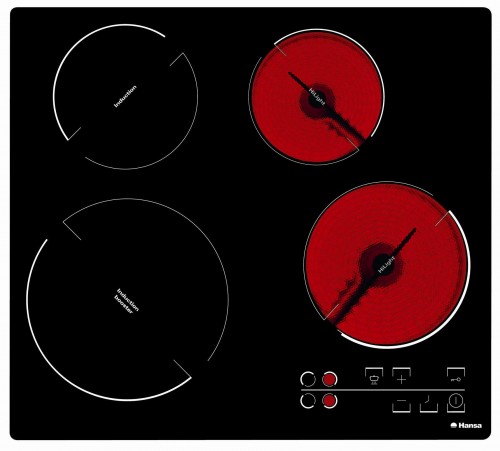
Electric cooker with combined burners
Combo models have become popular due to their versatility, combining induction cooker and ceramic burners. The first are distinguished by low power consumption, fast warm-up and safety. Ceramic burners are not so safe, but they allow using any dishes that do not fit the “induction”.
Functionality and type of management
Cheap models with cast iron or spiral heaters are simple mechanical control. The lack of electronics is not always a disadvantage; for those users who find it difficult to master a new technique, this is the best choice. The option of budget models will not impress with innovations and convenience, but these criteria are not always priority.
Plates coated with glass-ceramic or tempered glass, for the most part, are equipped with touch or slider controls. Many modifications have a separate display to display the current work process and the specified commands.
What interesting options can be in such devices?
- Adjusting the size of the burnerwhen the heating zone “adjusts” to the dishes. Rings in such plates cover most of the cooking surface and can be combined, it gives the opportunity to cook both in small dishes, and in large or non-standard.
- Expansion of the heating zone, two and three contour rings. As a rule, in the stove there is one or two zones with an increase in the diameter of heating.
- Panel block from accidental start during cooking or off. The safety option, firstly, will save young children, and secondly, it will not allow knocking down the cooking settings from an erroneous touch.
- Timer can act on the entire stove or on a specific heating zone. After the time has elapsed, the hotplate switches itself off or only signals ready.
- In induction and hi-light plates step adjustment of power. The more cooking modes, the more accurately you can choose the temperature.
- Power boost - intense heating, when the power is increased by 30-50%, due to a decrease in the power of the adjacent burners.
- Auto-boiling - the stove increases power until boiling, then the temperature is reduced to the set point.
- Other protective functionswhen the device automatically shuts off when: boiling away liquid or empty dishes.
- Indication of residual heat / mains connection.
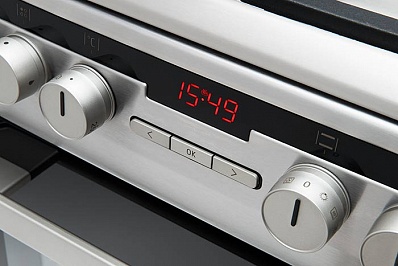
Hansa electric cooker with timer
Form and design
The appearance of modern electric stoves is impeccable: the absence of unnecessary parts, concise forms, smooth surfaces, basic colors. Talking about coloringIt should be noted that the hob of glass-ceramic can be decorated with an ornament or designer illustrations. The latter will cost more, but the plates with simple drawings are rare, but quite affordable.
Classic plates with a coating of enamel or stainless steel do not differ in a special style, but they are fully capable of complementing both the cozy kitchen and the stylized Hi-Tech.
The form stationary freestanding plates do not differ in creativity, in contrast to embedded technology. Flat recessed panels can be round, oval, rectangular or non-standard. The smaller the burners on the stove, the more free space will remain on the table.
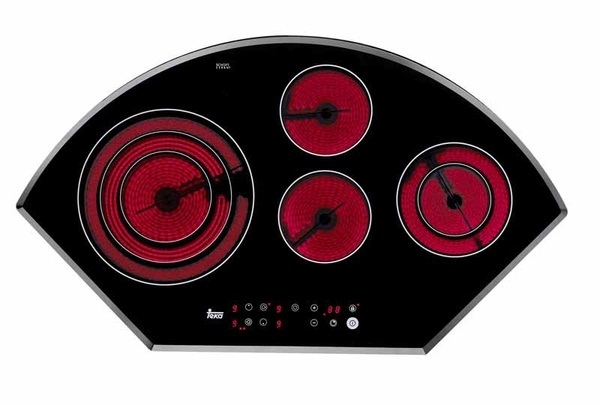
A little about the dishes
As mentioned above, the advantage of spiral or cast-iron burners is that on such plates you can use absolutely any dish. Glass-ceramic surfaces are more demanding, it is not recommended to put aluminum dishes on them, it leaves traces. Induction heat only the dishes, the metal of which contains ferromagnetic elements. Regardless of the type of kitchen utensils, be it a saucepan, frying pan, coffee maker (geysernaya or turkish), the bottom should be clean and even. Defects such as chips, dents or grooves are not allowed.
Difficulties with the selection of dishes for induction devices are solved by purchasing one or two adapters.Their use makes it possible to cook in dishes of different diameters and from any material.
Summarizing, we can say that the range of electric stoves is able to satisfy the needs of even the most demanding users. A rich variety covers the entire price range, contains all sorts of shapes, sizes and colors. In the near future, we can expect the expansion of functionality, the modernization of control units, and the equipping of plates with various modules for remote control.

/rating_off.png)






